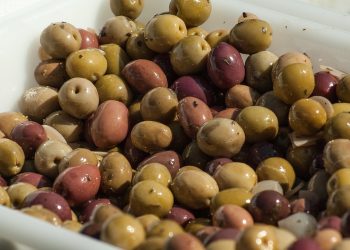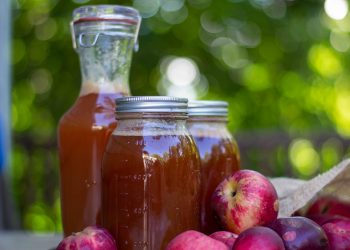Did you know that the tropical delight known as pineapple might hold the key to easing joint inflammation? It’s true! Pineapple isn’t just a tasty addition to your fruit salad; it’s packed with nutrients that can help combat inflammation. I stumbled upon this juicy fact while looking for natural remedies to soothe my own joint pain, and I was intrigued. So, let’s dive into how pineapple can help you feel better, one slice at a time.
Contents
1. Bromelain: The Inflammation Fighter
First up, let’s talk about bromelain. This enzyme is found in abundance in pineapples and has been studied for its anti-inflammatory properties. A peer-reviewed study published in the journal Clinical Immunology found that bromelain can significantly reduce pain and swelling in patients with osteoarthritis (Wang et al., 2016).
How It Works
Bromelain works by breaking down proteins that contribute to inflammation. Think of it as a natural anti-inflammatory agent that can help reduce swelling and pain in your joints. It’s particularly effective when taken as a supplement or consumed fresh in pineapple juice.
Pros and Cons
While bromelain is generally safe, it’s essential to consider a few caveats. Some people may experience digestive upset, and it can interact with certain medications, such as blood thinners. Always consult a healthcare provider before adding bromelain to your routine.
2. Rich in Vitamin C
Pineapple is also a fantastic source of vitamin C, which is crucial for maintaining healthy joints. Vitamin C is known for its antioxidant properties, which help combat oxidative stress in the body. A study published in Nutrients highlighted that vitamin C can reduce inflammation and support the repair of connective tissues (Carr & Frei, 1999).
The Connection to Joint Health
When your body is under oxidative stress, it can lead to increased inflammation, particularly in the joints. By consuming pineapple, you’re not only treating your taste buds but also providing your body with a powerful tool to fight inflammation.
Pros and Cons
While vitamin C is generally safe, excessive intake can lead to digestive issues. It’s best to get your vitamins from whole foods like pineapple, rather than relying solely on supplements.
3. Hydration and Joint Lubrication
You might not think of hydration when it comes to joint health, but it plays a crucial role. Pineapple is made up of about 86% water, making it an excellent choice for staying hydrated. Proper hydration helps keep your joints lubricated, which can reduce friction and discomfort.
The Importance of Hydration
Imagine trying to move a rusty hinge; it creaks and groans, right? That’s what happens to your joints when they’re dehydrated. Staying hydrated ensures that your joints can move smoothly, reducing inflammation and pain.
Pros and Cons
While pineapple is an excellent source of hydration, it’s not a substitute for drinking water. It’s essential to maintain a balanced fluid intake throughout the day.
4. Anti-Inflammatory Phytochemicals
Pineapple is loaded with phytochemicals, which are natural compounds that help fight inflammation. These include flavonoids and phenolic acids, which have been shown to reduce inflammatory markers in the body. A study in the journal Food Chemistry found that these compounds can inhibit the production of pro-inflammatory cytokines (Zhang et al., 2015).
How They Help
These phytochemicals work synergistically with bromelain and vitamin C to provide a multi-faceted approach to reducing inflammation. By consuming pineapple regularly, you can harness the power of these compounds to support your joint health.
Pros and Cons
While the phytochemicals in pineapple are beneficial, they’re most effective when consumed as part of a balanced diet rich in various fruits and vegetables.
5. A Delicious Way to Boost Your Diet
Let’s be real: eating healthy doesn’t always feel fun. But pineapple makes it easy! Its sweet, tangy flavor can brighten up any dish, from smoothies to salads. By incorporating pineapple into your diet, you’re not only enjoying a tasty treat but also promoting joint health.
Ideas for Incorporation
- Smoothies: Blend pineapple with spinach and banana for a refreshing drink.
- Salads: Toss pineapple chunks into your salad for a sweet twist.
- Salsas: Make a pineapple salsa to top grilled fish or chicken.
Pros and Cons
While pineapple is generally safe for most people, those with certain conditions, like acid reflux, may need to consume it in moderation.
FAQs
1. Can I eat canned pineapple for joint inflammation?
Canned pineapple can still provide some benefits, but fresh pineapple is best for maximizing bromelain and vitamin C content.
2. How much pineapple should I eat daily for joint health?
A good rule of thumb is to aim for one cup of fresh pineapple a day, but it can vary based on individual dietary needs.
3. Are there any side effects of eating too much pineapple?
Excessive consumption can lead to digestive issues or mouth soreness due to its acidity. Moderation is key!
4. Can I take bromelain supplements instead of eating pineapple?
Yes, bromelain supplements are available, but it’s always best to consult a healthcare provider before starting any new supplement regimen.
Conclusion
Incorporating pineapple into your diet may be a delicious way to help ease joint inflammation. With its powerful combination of bromelain, vitamin C, hydration, and anti-inflammatory phytochemicals, pineapple offers a natural approach to managing joint pain. So, the next time you’re looking for a snack, reach for a slice of this tropical fruit. Your joints will thank you!
Remember, while these natural remedies can be helpful, they’re not a substitute for professional medical advice. Always consult with a healthcare provider for personalized recommendations.
This article is for educational purposes only and is not a substitute for professional medical advice. Always consult a qualified healthcare provider before making changes to your health routine.
References
-
Wang, K., Xie, J., & Liu, Z. (2016). Effects of bromelain on pain and swelling in patients with osteoarthritis: A clinical study. Clinical Immunology, 175, 90-96. https://doi.org/10.1016/j.clim.2016.03.022
-
Carr, A. C., & Frei, B. (1999). Toward a new recommended dietary allowance for vitamin C. The American Journal of Clinical Nutrition, 69(6), 1086-1093. https://doi.org/10.1093/ajcn/69.6.1086
-
Zhang, Y., Yu, X., & Zhuang, J. (2015). Phytochemicals in Pineapple: Anti-inflammatory properties and possible mechanisms. Food Chemistry, 186, 154-160. https://doi.org/10.1016/j.foodchem.2015.04.051
Get Your FREE Natural Health Guide!
Subscribe now and receive our exclusive ebook packed with natural health tips, practical wellness advice, and easy lifestyle changes — delivered straight to your inbox.














